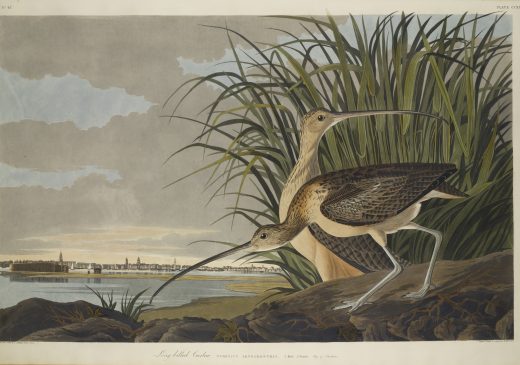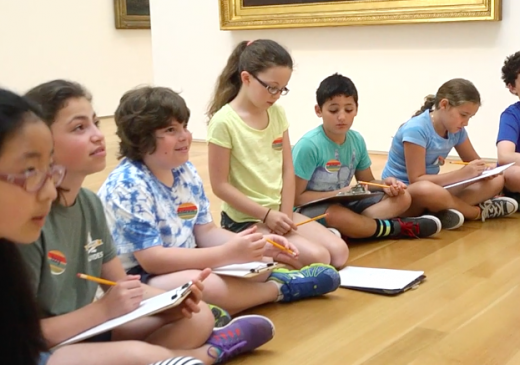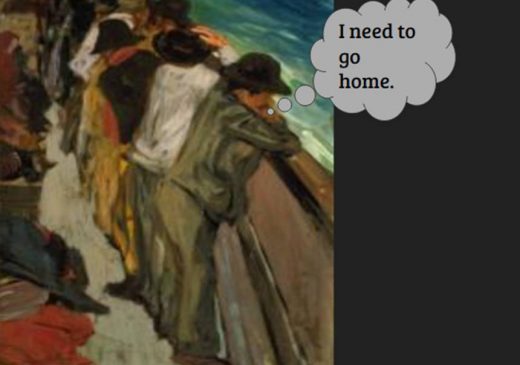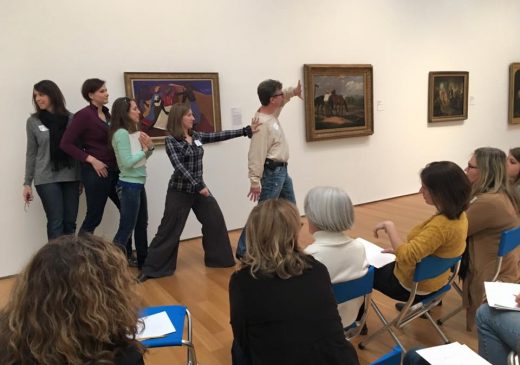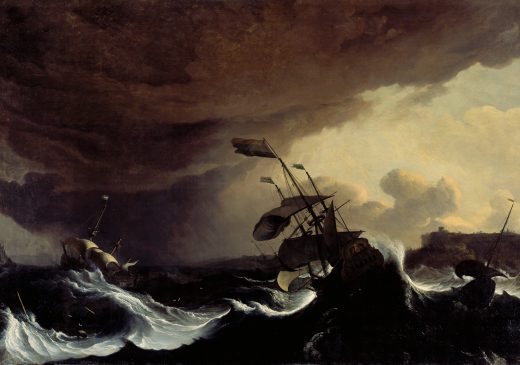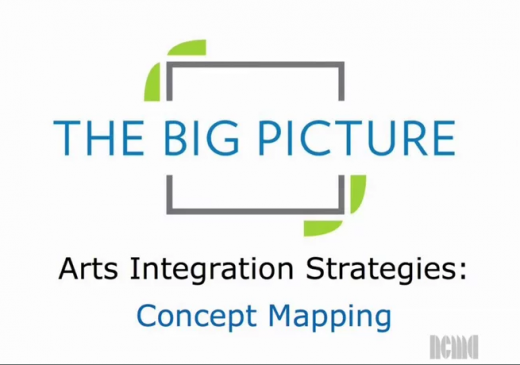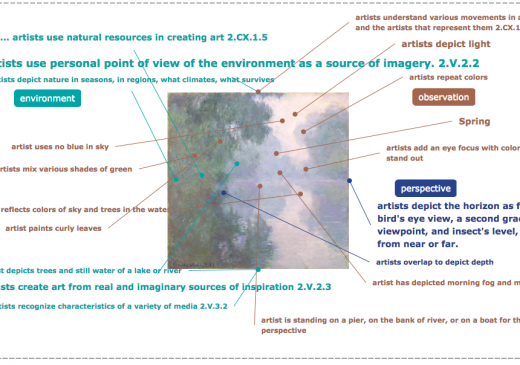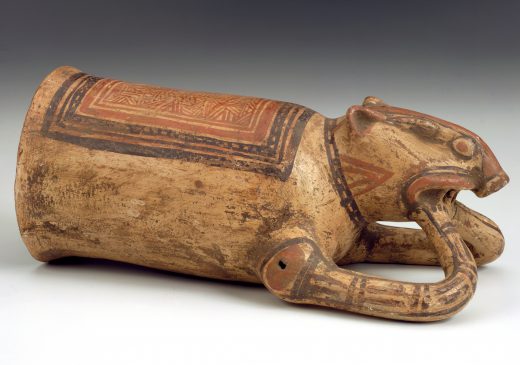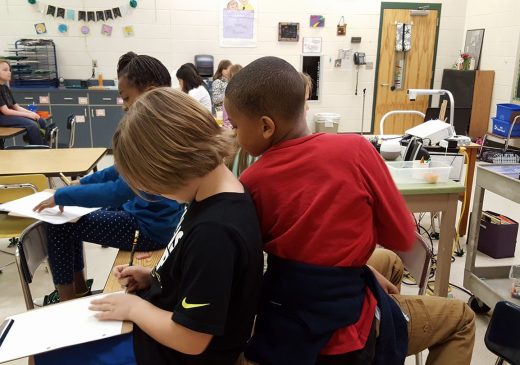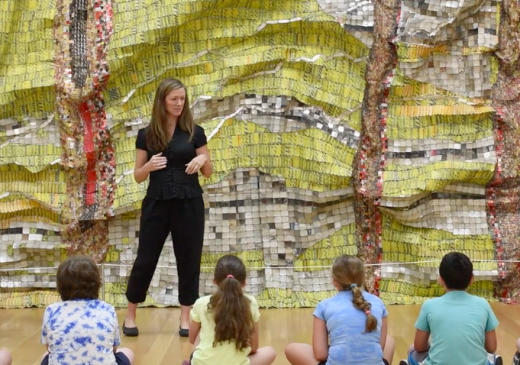
Getting Started with Art Integration
WHAT is Art Integration?
Arts integration is an approach to teaching and learning in which the arts and another subject area are taught together with the intentional purpose to make connections, foster creative and critical thinking, and develop awareness of multiple perspectives.
WHY Art Integration?
The North Carolina Museum of Art believes that the arts are essential to all classrooms. Integrating the arts helps collapse the walls of the traditional classroom and make students more aware of the interdisciplinary 21st century world they inhabit.
A principal speaks on the benefits of art integration.
Through resources and professional development, we support educators with a wide range of previous experiences with arts integration. How would you rate your current relationship with arts integration?:
- GETTING STARTED: I’m interested in trying arts integration. I might be interested in searching for more information about how to use NCMA resources and arts integration strategies for classroom/ homeschool instruction. I would like to know more about how to get started – especially the key integration strategies.
- PRACTICING & REFINING: I’m aware of and have some experience with arts integration strategies, but still need practice and support to build new skills. I might be interested in finding new works of art to connect to curricula, new integration models, & new ideas.
- MASTERING: I’m competent with arts integration and feel confident training, supporting, and/or evaluating other educators who want to try integration. I’m mostly looking for opportunities to share my own ideas, identify best practices, and make new connections.
HOW does NCMA support art integration?
Our collection of art is a vital tool for NCMA’s model of art integration. We encourage teachers and students to explore our art through object-based learning strategies, cross curricular concepts, and hands-on activities that build creative capacities. In object-based learning, works of art are used as both a catalyst and bridge to help teachers and students see and articulate how ideas and topics connect. Works of art provoke discussion, inspire writing, and spur students to create their own art.
WHAT can you do to get started with art integration?
Find examples of strategies and lessons that incorporate art and can be used in classrooms across the curriculum.
Visual Literacy Discussion Strategies:
Inquiry: Building skills in inquiry is essential for student engagement in exploring works of art. Watch the video below for an introduction to inquiry and then sample three strategies.
A brief introduction to inquiry.
Multi-Modal Learning
Incorporate movement and sensory experiences to motivate students who benefit from going beyond verbal prompts. Sample the strategies below for ideas.
Art-Integrated Planning with Concepts
Like works of art, concepts, or big ideas, serve as an entry point, bridge, or anchor to integrating art across the curriculum. Concepts, such as change, perspective, and problem-solving, are commonly used terms in the classroom and are broad enough to allow for multiple interpretations. Learn more from the video and tools linked below.
Building Creative Capacities
Our quick tips and lesson plans feature creative opportunities for students that focus on building skills in critical thinking, problem-solving, and communication through the artistic process. Try out a few examples below.
Contar historias sobre nosotros mismos (plan de clases)
Los alumnos exploran las imágenes visuales de un traje ceremonial africano. Los estudiantes crearán trajes y danzas para...
ver el plan de la lección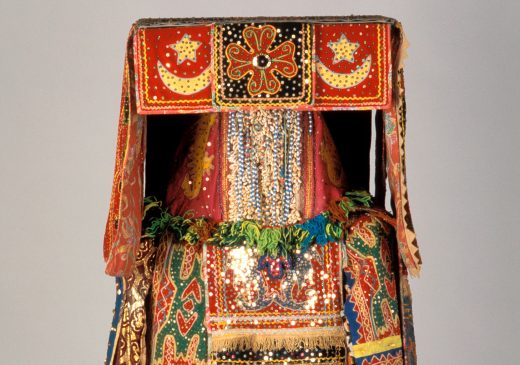
Construir círculos (plan de la lección)
Los estudiantes construirán círculos concéntricos utilizando un compás, luego planificarán y diseñarán una obra de arte utilizando Frank...
ver el plan de la lección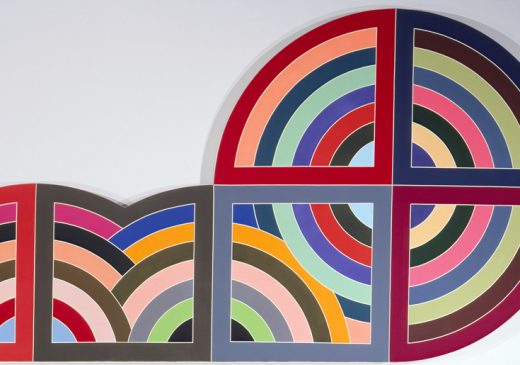
Wire Endangered Birds (lesson plan)
Students research of endangered birds of the United States and the impact this has on the ecosystem of the...
ver el plan de la lección